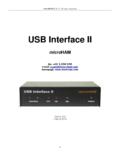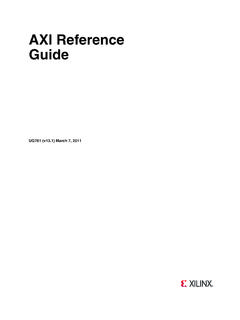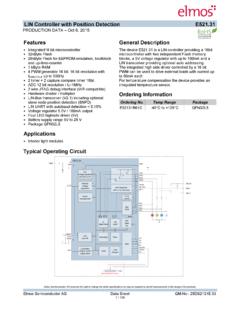Transcription of Best Practices for In-Building Communications
1 National Public Safety Telecommunications Council Best Practices for In-Building Communications Appendices A through E. National Public Safety Telecommunications Council (NPSTC). In-Building Working Group Stu Overby, Chair November 12, 2007. Appendix A: Interference Survey The attached interference survey was developed and has been distributed to the public safety community by the Jack Daniel Company. ---------------------------------------- ---------------------------------------- ----------------- The following is a survey to gather information and statistics concerning any interference from BDAs (bi-directional Amplifiers) you may have experienced. This survey will be used in support of petitions requesting the FCC update and revise rules for BDAs.
2 One such petition may be viewed at: The intent is to get the FCC to open the rules for public input of changes needed regardless of whether you agree with the Bird petition or not. Please email comments, questions or suggestions about this survey to: 1. Has BDA OSCILLATIONS (not noise) caused you any problems ? No Yes 2. If you answered YES to question 1, how many different BDA installations in the last 5 years ? (1 to 10+). 3. Has broadband NOISE (not oscillations) from BDAs caused you any problems (such as receiver desense) ? No Yes 4. If YES to question 3, how many different BDA installations were focused on the same donor site ? (1 to 10+). 5. Do you think internet BDA sales to consumers should be stopped ?
3 No Yes 6. Do you think 'voluntary' registration of BDA installations would work ? No Yes 7. Should the FCC enforce existing BDA (signal booster) rules better ? No Yes 8. Should FCC rules be updated and made more restrictive ? No Yes 9. Should BDA installations be licensed similar to control stations ? No Yes 10. Is there any place else this survey should be posted ? (Feel free to distribute to other groups). 12. May we supply your name to the FCC with this survey ? The FCC pays more attention to specific reports than anonymous sources. No Yes Contact me first 1. Appendix B. Introduction to In-Building Wireless Signal Distribution for Public Safety A General Design Overview and Installation Guideline.
4 (See notice on last page). 2005, 2007 Jack Daniel Company Tel: 800-NON-TOLL. email: Note: NPSTC Received Permission from Jack Daniel to include this copyrighted document. 2. Introduction: Wireless users expect and rely on Communications wherever they go, including inside large structures, high rise buildings, underground parking, malls, basements, subways, etc. When wireless radio frequency (RF) signals pass through any material they lose strength and when the RF signal levels fell below a given amount, Communications becomes unreliable or completely stops. Whenever the area needing radio coverage is below grade (underground) it is almost certain a RF. distribution system will be needed.
5 The following discussion of RF (radio frequency) distribution systems is intended as an introduction to the various solutions being used to improve RF signal levels when necessary. 3. The primary components of an amplified RF Distribution system are identified below: 1. Donor (roof) antenna. This is called the "DONOR" antenna. It is usually mounted on the roof, or a side of the structure, where a clear line-of-sight path exists to the distant radio tower. The distant site is also known as the "Donor". This is a two way interface;. - the DOWNLINK" is the RF signal direction going INTO the structure. - the "UPLINK" is the RF signal being sent back OUT of the structure.
6 2. BDA (Bi-Directional RF Amplifier). A very specialized RF amplifier which selects what frequencies are to be amplified in the downlink and uplink paths (they are different) and increases the RF signal strength in both directions. The FCC calls these amplifiers 'signal boosters' and there are very specific federal rules on their operation that should be followed by the system designer. 3. The RF distribution network. The most common method is to use coaxial cables. The coaxial cables fall into two classes;. standard (non-radiating) and radiating. Standard (Non-radiating) coaxial cables route RF signals to multiple indoor antennas placed in areas where radio operation is needed.
7 Special devices that take a portion of the RF signal out of the main coax cable to feed multiple antennas may be used. There are several types of these devices and they may be called "taps", "splitters" or "decouplers", all serving the same purpose. 4. "Radiating" coaxial cables (sometimes called 'leaky coax') intentionally allows low level RF. signals to 'leak' in and out along the path of the cable. The ideal location for radiating cables is in passageways, tunnels etc. The RF signal looses strength going through coaxial cable. These losses increase with length and RF frequency. In most cases, the maximum usable length of a coaxial cable is less than 1000. feet.
8 Coaxial cables used for RF distribution must be 50 ohm (not 75 ohm) type. Indoor antennas can be placed at the end of a coaxial cable or 'tapped' into a coaxial cable to allow multiple antennas along the coaxial cable route. This method is called Distributed Antenna System or "DAS". 800 MHz antennas are typically small and unobtrusive, some looking similar to smoke detectors. Ideally, the indoor antennas will be located where they are optically visible from every location you wish to communicate, however RF signals can travel through 2 - 4 wood or drywall walls but the signal will be weakened. In parking garages, low profile (2" thick, 6 " diameter) antennas are sometimes glued to the lower side of overhead structural beams with construction adhesive.
9 Locations of antennas sometimes follow the layout for video surveillance cameras, with both often serving the same area. Photo of a ceiling mounted low profile antenna. "RF-Over-Fiber" Fiber Optic cables When a long coaxial cable would be required to connect antennas inside a larger structure, a long tunnels or adjacent buildings, it may be more practical to use 'RF-over-fiber' technology. Instead of using coaxial cables, the signals are converted to light and transported over fiber optic cables. On longer distances, fiber often offers less cost and easier installation. Use of fiber optic cables is explained further later. 5. Mixed RF distribution type designs: All three types of cable may be combined as required by each project by the distribution system designer.
10 Basic Single Structure application;. Figure 1. In this example, a directional roof top antenna (Donor Antenna) is positioned so it has a line-of- sight path to the appropriate distant radio tower. A non-radiating coaxial cable connects the donor antenna to the BDA RF amplifier. 6. SPECIAL NOTE: The most frequent problem with an In-Building installation is inadequate isolation (path loss). between the roof antenna and those within the building . When insufficient the system 'oscillates'. and causes interference to yourself and others. It is illegal to operate a signal booster that oscillates. Reduce gain settings to prevent oscillations. The industry standard for minimum antenna to antenna isolation uses this formula; BDA gain +.








